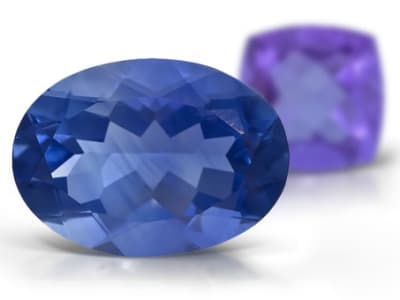Colored gemstones are nature’s radiant and remarkable gift from the ground. When it comes to the beloved value of colored gems, they are typically prized for their color saturation, clarity and brilliance, but not all stones are created equal. Some colored gemstones have incredible properties or effects, called phenomena, that set them apart from others, including those in the same family or species. Many people know some of these phenomena quite well and will recognize labradorescence in labradorite, play-of-color in opal and chatoyancy in stones such as tourmaline and sapphire.
What is gemstone phenomena?
Gemstone phenomena can be best described as optical effects or
properties shown by gemstones. These mineral specimens that display
optical effects can also be called phenomenal
gemstones. The main cause of gemstone phenomena, such as color
change and color shift, are the different crystal systems and elements
in gemstones and the amount or quality of light that makes them
visible. Well-known examples of gemstone phenomena or properties include:
• Adularescence
• Cat's Eye
• Fluorescence
• Iridescence
• Play of Color
• Color Change and Color Shift
To learn more about these gemstone phenomena, take a look at our article on optical properties.
What is color change and color shift?
One of the most famous phenomena is called color change or color shift. Color change happens when a stone appears as one color in daylight and another color in incandescent light (artificial or indoor light). For true color change to occur, a stone must change to two colors not bordering each other on a color wheel, such as red to blue, purple to green or blue to purple. A color shift happens when a stone changes to colors that border each other on the color wheel such as purple to blue-purple or red to orange-red.
How does color change happen?
Color change is not only beautiful but scientifically interesting. Color change is viewable because temperature or the wavelength of light sources can be very different. Regular daylight or similar lights are strong in blue wavelengths, while indoor and incandescent (heated) lights are strong in yellow wavelengths. Light is selectively absorbed by a material and the wavelength or wavelengths that are not absorbed are what the brain interprets as the color.
When a stone has the color change phenomena, it selectively absorbs multiple wavelengths of light, but will appear as whatever wavelengths are dominant and not absorbed from the source. In short, color change occurs when certain colors of light overpower other colors to make a gemstone appear that hue. This is how a stone can be a green color in daylight and a purple color in indoor light. The gemstone is absorbing more of the warmer color wavelengths in the daylight, but it is also absorbing more of the cooler color wavelengths in the indoor light.
What are the types of color-change gemstones?
- Alexandrite: Species of minerals that can show a color change are few and far between. The most famous is alexandrite, a variety of chrysoberyl. The most valuable colors this gemstone can change from are green in daylight to red-purple in incandescent light, but it can also be found in many other color change combinations. Alexandrite was named for the Czar of Russia, Alexander II, because this stone was discovered in the Ural Mountains and displayed the colors of Imperial Russia.
- Alexandrite is also the alternate birthstone for June. Since natural alexandrite, especially alexandrite from Russia, is becoming hard to find and has a premium price for smaller stones, many gemstone and jewelry lovers are turning to lab-created alexandrite for its color change properties. This gemstone is a lovely specimen and makes a strong visual impact of color change without a high price for lab-created alexandrite. Whether lab-created or natural, alexandrite will remain one of the most popular and historic color change gemstones on the market.
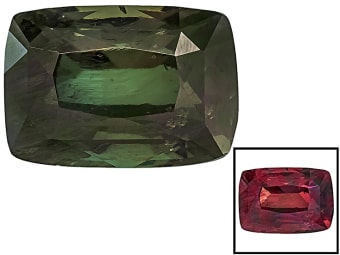
- Fluorite: Fluorite is a rare gem species that can come in just about every color of the rainbow and has so many interesting patterns.Although fluorite specimens appear rare on the mineral market, they are beautiful stones with interesting crystal shapes. These shapes are a combination of a cube and a dodecahedron (12-sided shape) called a pseudocubicdodecahedron (phew that’s a mouthful). This stone is perfect for display in stands and on shelves with other gems and minerals, or it can be worn as beautiful statement pieces of jewelry.
- There are also mineral specimens of fluorite from Pakistan that color shift. When exposed to outdoor light, Pakistani fluorite normally shifts from blue to bluish purple. Since it’s one of the few readily available fluorite specimens that shows this phenomenon, Pakistani fluorite is rare and special. Most of the time, it is very difficult to find color change or color shift mineral specimens because if they have any value, those specimens are normally faceted. Thankfully, this unique gemstone was saved as natural specimens for mineral collectors to enjoy. Moreover, this stone is perfect for a gem collector on a budget or someone that loves phenomenal gemstones and minerals.
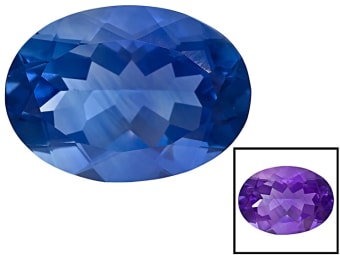
- Sapphire: Arguably the most famous gemstone in this list is sapphire, known as one of “The Big Three” along with emerald and ruby. Sapphire may be well known for its beautiful blue color, but it also comes in a variety of other colors and shades including yellow, green, orange, purple and white. Aside from appearing in different colors, sapphire can also display color change.
- Color change sapphire can transform into different colors depending on the location where it was mined; however, sapphire is well known for its color change from a shade of khaki green to reddish purple. Color change sapphire can also be found in different locations, but the gravel pits of Tanzania are the most common place it is found. All in all, color change sapphire is a great gemstone to collect, alongside alexandrite and garnet for their optical effects.
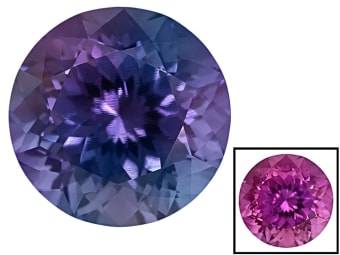
- Garnet: Garnet is another popular red gemstone that can appear in many colors similar to sapphire. Garnet’s popular red color is compared to pomegranates and fire, while its history goes back to ancient times and connects it to modern faith and mythology. Aside from appearing in many other colors such as orange, green, red, pink, white and yellow, there is also color change garnet.
- Despite garnet being known and adored by ancient humans, color change garnet was not reported until the 1970s. However, It was not popular until 1987 when garnet exhibiting a similar color change effect as alexandrite, was discovered in Tanzania’s Umba Valley. Since then, different types of color change garnet have been found, such as the Madagascan garnet which can change from blue and bluish-green to reddish-purples.The Tanzanian color change garnet can transform from khaki olive limes to orange crimson reds. Other examples of color change garnet include shades of green, beige, brown, gray and blue that turn to a reddish, purplish or pink color in incandescent light.
- Despite normally being found in small sizes (one of the largest specimens was only reported as being 9.5 carats), color change garnet can show its phenomenon equal to top-quality alexandrite. While color change in alexandrite is caused by the element chromium, color change garnet can have its powerful effect from vanadium (sometimes chromium as well). Regardless, garnet’s color change is an attractive phenomenon and this gemstone can be compared to alexandrite in quality.
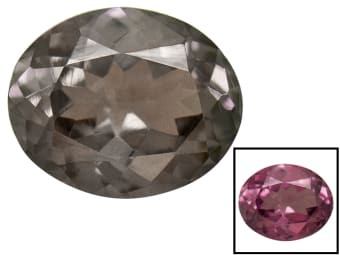
Conclusion
Color change and color shift gemstones are mesmerizing to behold, and the science behind gemstone color change and its interaction with light is fascinating for any collector to study. When it comes to displaying the color change phenomenon, these gemstones truly are phenomenal!
References
Gemporia. (2017, October 11). Gemstone elements: Chromium. Gemstone Elements: Chromium. Retrieved from https://www.gemporia.com/en-us/gemology-hub/article/645/gemstone-elements-chromium/
4 gemstones that change color phenomenal. (2022, June 29). Galt & Bro. | Fine Jewelry. Retrieved from https://galtandbro.com/4-phenomenal-color-change-gemstones/
Koester, S. M. (2020, July 11). Five natural color-changing gemstones. Medium. Retrieved from https://sierramkoester.medium.com/five-natural-color-changing-gemstones-e732892b7aff
Poudevigne, B. (n.d.). Garnet information. GemMatrix. Retrieved from https://gemmatrix.com/garnetinformation
Sisk, G. D. (2011). Jewelrytelevision Guide to Gems & Jewelry. Jewelry Television.
The magnetic metals that color gemstones. (n.d.). Retrieved from https://www.gemstonemagnetism.com/overview_p_4-_the_magnetic_metals_that_color_gems
